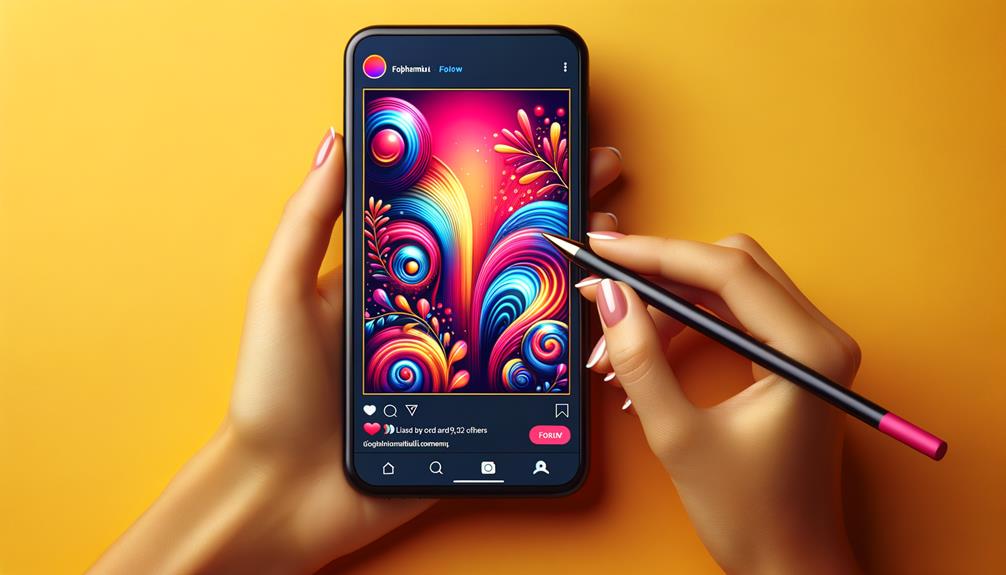

When Coca-Cola launched its #ShareACoke campaign, it harnessed the power of personalization to create a social media ripple effect, boosting its ROI significantly.
You’ve seen the potential that social media holds, and you’re eager to tap into it. To do this, you’ll need to craft strategies that resonate with your audience and align with your business goals.
You’ll choose platforms where your customers spend their time and create content that they can’t scroll past. Investing in targeted advertising[1] will also play a crucial role, as it can propel your message further into the digital sphere.
Remember, it’s not just about posting; it’s about engaging with your community and analyzing the data to refine your approach.
As you navigate the ever-evolving landscape of social media, you’ll find that a flexible, data-informed strategy is your best bet for driving a robust return on investment.

In defining your social media objectives, it’s crucial to set specific and measurable goals that align with your company’s broader marketing ambitions. To maximize your ROI on social media, strategically outline what success looks like for your brand. Whether it’s boosting brand awareness, increasing website traffic, or generating leads, your social media goals must serve as a compass for your marketing efforts.
Crafting an effective social media strategy demands an analytical approach to understand your target audience and the kind of content that resonates with them. Invest time in developing a content strategy that not only engages but also converts.
You must dissect demographic data to pinpoint who you’re speaking to; age, location, and income level shape your strategy’s skeleton.
Gauge interests and behaviors to tailor your message—knowing what captivates your audience transforms content into conversions.
Lastly, scrutinize engagement metrics; they’re the compass that guides your content’s resonance and reach.
Demographic analysis empowers you to pinpoint your ideal audience within the vast social media landscape. This precise understanding enhances your marketing strategy, ensuring personalization in B2B interactions and optimizing ROI for B2B social endeavors.
Consider these steps:
While refining your buyer personas with demographic data, it’s crucial to delve into audience interests to ensure your content aligns with what truly engages them. In crafting your social media marketing strategy, consider the pain points and aspirations that drive your audience’s behavior.
Analyzing these interests isn’t just about customer[4] retention; it’s also about positioning your brand as a beacon of thought leadership in your niche.
For B2B social media, this means creating content that not only informs but also inspires. Use social media listening tools to discover the conversations happening around your industry. Then, tailor your content creation to these discoveries. By doing so, you’ll resonate more deeply, foster trust, and ultimately, convert interest into actionable leads.
Your social media content must be a mirror reflecting audience interests—this is the keystone of engagement.
Understanding engagement metrics is essential as they reveal how effectively your content resonates with your target audience. To maximize your social media strategy and boost ROI, here’s what you need to focus on:
Selecting the appropriate social media platform is essential for your brand’s success, as each caters to different audiences and content styles. When you’re crafting your Marketing Campaign, it’s not just about creating compelling social media content; it’s about strategic social media management. To maximize ROI, you’ve got to choose the right platforms that resonate with your target demographic.
Here’s an analytical breakdown of platforms to consider:
| Platform | Best Use |
|---|---|
| B2B marketing, Professional networking | |
| Instagram[5] | Visual Content Marketing, Social commerce |
| Real-time engagement, Trend tracking | |
| Facebook[6] | Broad demographic reach, Community building |
| YouTube | Long-form content, Tutorials, Advertisements |
To captivate your audience’s attention, ensure your content packs a visual punch; images and videos can significantly increase engagement and shareability.
Incorporating interactive elements like polls, quizzes, and contests not only boosts engagement but also provides valuable insights into your audience’s preferences.
You’ll find that a strategic mix of these techniques can amplify your message and solidify your brand’s presence in the digital landscape.
Your brand’s visual content is the cornerstone of capturing audience attention and fostering lasting engagement on social media platforms. To maximize your ROI through digital marketing[2], consider these strategic moves:
Beyond captivating visuals, you’ll boost your social media ROI by incorporating interactive elements that actively engage your audience. By weaving interactive elements into your content marketing, you’re not just telling a story; you’re inviting your audience to be a part of it. Use tools like polls, quizzes, and Q&A sessions to spark conversations and encourage organic social interaction.
Strategically allocate your marketing budget to balance organic and paid social tactics. While paid ads expand your reach, interactive organic content often resonates more deeply, fostering a community around your brand. From contests that challenge users to contests that reward participation, every interactive engagement is an opportunity to maximize ROI, making every dollar spent on social media work smarter, not harder.
Within the realm of social media marketing, you’ll find that leveraging paid advertising can significantly amplify your brand’s visibility and drive sales more effectively. Here’s how you can harness this tool for maximum return on investment:
By examining your social media metrics in-depth, you’ll gain invaluable insights into what’s driving your ROI and what isn’t. To maximize your social ROI, you must delve into the data, looking beyond surface-level likes and shares.
Analyze performance data to understand the impact of your social media content. Consider engagement rates, click-throughs, and conversion metrics. These indicators are critical for B2B marketers aiming to refine strategies and justify budget allocations.
Leverage platforms and tools that can help streamline this analysis, identifying patterns that could inform future content creation. Remember, the data doesn’t lie; it’s a treasure trove of information waiting to be decoded.
Harnessing data analysis, you’ll next turn your focus to cultivating a dynamic online community that bolsters brand loyalty and amplifies your marketing message.
Here’s how you can foster community engagement:
You need to routinely refine your social media plan to stay ahead of the curve and maintain a high ROI. Analyzing performance metrics allows you to adjust strategy regularly, ensuring your social media content resonates with your audience.
By embracing A/B testing, you can compare different approaches and adopt the most effective tactics. Keep in mind, different social platforms may require unique strategies; what works on one may not on another.
Staying attuned to shifting best practices, you’ll not only maximize ROI but also help customers by using social media more effectively. Remember, the digital landscape evolves constantly.
To thrive, your approach must be dynamic, informed by data, and responsive to both industry trends and the ever-changing algorithms governing visibility and engagement on social platforms.
You can improve ROI by leveraging social media’s targeted ads, engaging content, and analytics tools to reach your audience more effectively and track campaign performance for strategic adjustments.
You’ll find that leveraging user-generated content often yields a high ROI, as it authentically engages your audience and encourages peer-to-peer promotion, crucial for strategic, cost-effective brand growth.
ROI in your social media strategy is the return you see from your campaigns, whether it’s increased sales, more followers, or improved brand engagement, all measured against your marketing efforts and expenses.
To generate good ROI from your social media marketing, you’ll need to blend strategic scheduling, targeted ads, engaging video content, and user contributions, all while meticulously tracking performance to refine your tactics.
